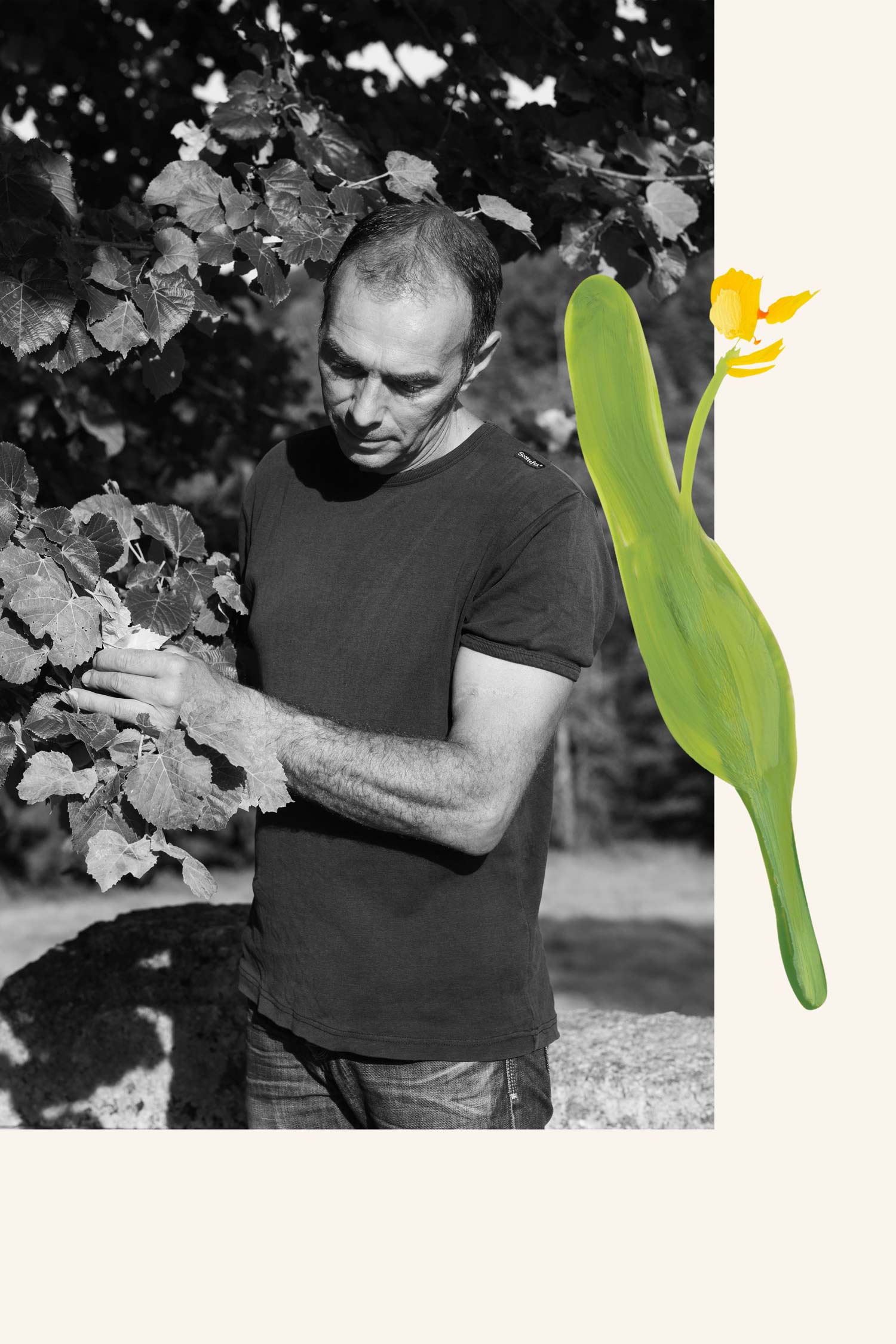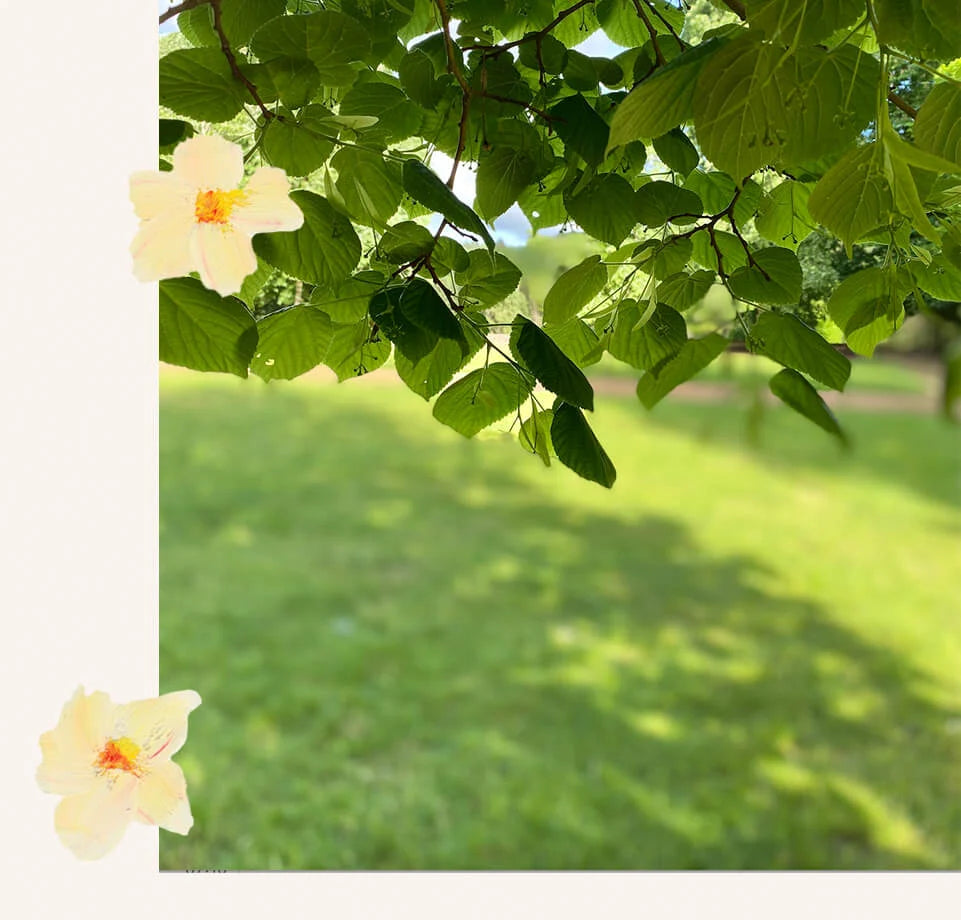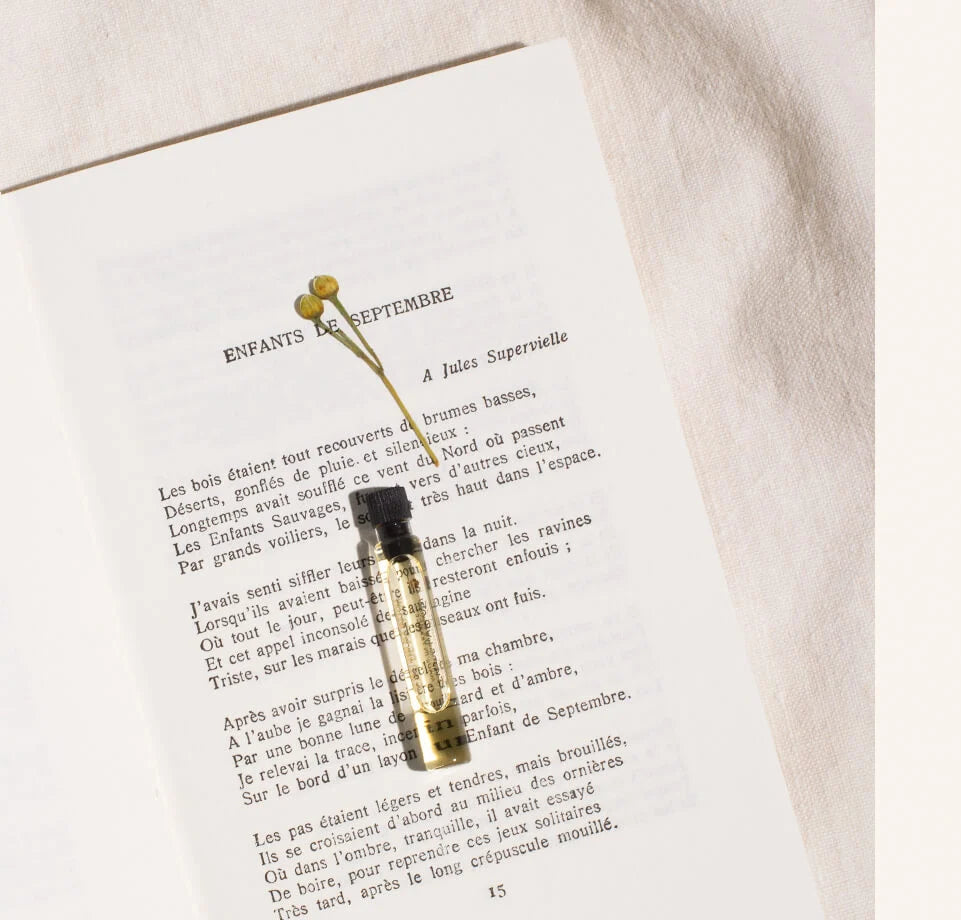The Linden Tree
Lindens have been known and loved the world over for their innumerable virtues since time immemorial. Omnipresent in myths and legends, it’s the tree of bonds and appeasement, so revered for its protection that it is planted near hospitals, churches, in village squares and school courtyards.
In the Middle Ages, lindens were planted near hospitals because they cleaned the air and brought calm. By royal order, they were then planted along paths and roads and their harvest was reserved for the hospices. Its ground bark was even worn as an amulet to protect its wearer, human or animal, from disease and injury. It is also the essence from Proust’s madeleine, memorable because it was dipped in a warm cup of calming linden infusion.
Linden is the tree that wishes you well, it is for this reason that it grows near man. No need to go to the ends of the earth to look for something that’s good for you, its right here, in our gardens and villages! Tree of abundance, it is the only one capable of doing our whole organism good.
A holistic response to the bane of our century, stress
At a time when everything is going too fast, taking care of and revitalizing yourself have become essential. To be comfortable in you skin also means being comfortable in your body and mind, everything is linked.
The linden is the only tree capable of doing our whole organism good, by calming the skin, the body and the mind…
Known for centuries for its virtues for the mind and body TiL is using, for the first time, all the linden tree’s potential having scientifically proven that it’s concentrate of molecules are also beneficial to skin.
-It heals the body: medicinal tree par excellence, part of pharmacopeia, it is detoxifying and calming, used in many remedies for its antispasmodic and sedative properties.
-It calms the mind: a well-known sedative for the nervous system, it calms the psyche, promotes sleep by exuding a comforting joyous aroma. For only ten days a year, the divine scent of honey and white flowers contribute to the feeling of abundance, to the point of being part of collective memory.
-It does wonders for the skin: full of calming, anti-oxidant, hydrating ingredients it has marvelous anti-aging properties.

Proven benefits throughout the body

The skin
Soothes & regenerates
Reduces wrinkles
Brightens the complexion
Scientific analyzes on Tiliactiv4®
Soothing effectiveness (tubo test): 64% inhibition capacity of 5-Lox (inflammation). Anti-oxidant effectiveness (tubo test): Free radical trapping capacity of 68.7%.
Cosmetics
The body
Detoxifies
Drained
Anti-Spasmodic
The effectiveness of lime tree demonstrated
The inclusion of Linden in the pharmacopoeia as a medicinal plant , its centuries-old use, the abundance of scientific literature and the fact that molecules from Linden are the active ingredient in famous anti-spasmodic medications are the best proof of its effectiveness .

The mind
Calm the mind
Reduces stress
Comfort with joy
Neuroscientific study on the emotional impact of TIL perfume
Analyzes of behavioral, physiological and cognitive dimensions: Provides joy, comfort and relaxation
The perfume
Shaman's word
Trees, like all living beings, have their own energy, feel ours and deserve our respect.
What is very touching about the lindens on the TiL family estate, is their age and their ability to continue to thrive despite hardships suffered over the decades (storms, lightning, pruning). Some are deeply injured, even split in two, but subsequent generations always wanted to give them a chance at survival; their resilience is moving, their memories too, with all the history they carry with them…
They are so deeply anchored to the place that their roots mingle with the stone walls; they healed by making bole scars, and are alive with the fullness of age and exhale a scent rarely found in such concentrations (probably because they are in the countryside, on a vast esplanade, without pollution or chemical treatment…)
One feels small and humble next to them, as if we were children and they were grandparents.

The sacred tree, a symbol of life and resurrection
At once majestic, elegant and hardy, it is the veteran tree of Europe, it can live up to 1000 years, thanks to its incredible regenerative abilities.
Linden is present in all civilizations. The sacred tree of Egyptian goddesses and the Ancient Greeks, seen by the Celts and the Romans as the symbol of gentle nurture, fecundity and maternal love.
It is the tree of light and joy, the dancing tree, that of faithful love, dedicated to Venus. In fact, its leaves are heart-shaped, and weddings are celebrated under the village’s linden. Celebrated by Ovid, La Fontaine, by way of Rimbaud, it is also the tree of light that ornament French gardens…

At the heart of collective imagination
By their longevity, lindens link eras and generations; it is the mediator between culture and nature. In all cultures it is the tree that wishes us well.
It is for this reason that it has always coexisted with humans, and they have liked living by its side.Celebrated by all, it was notably consecrated by Proust who dedicated an extraordinary passage in ”Remembrance of Things Past” to its ability to evoke memories :
“And suddenly the memory returns. The taste was that of the little crumb of madeleine which on Sunday mornings at Combray (because on those mornings I did not go out before church-time), when I went to say good day to her in her bedroom, my aunt Léonie used to give me, dipping it first in her own cup of real or of Linden tea. (…) But when from a long-distant past nothing subsists, after the people are dead, after the things are broken and scattered, still, alone, more fragile, but with more vitality, more unsubstantial, more persistent, more faithful, the smell and taste of things remain poised a long time, like souls, ready to remind us, waiting and hoping for their moment, amid the ruins of all the rest; and bear unfaltering, in the tiny and almost impalpable drop of their essence, the vast structure of recollection. And once I had recognized the taste of the crumb of madeleine soaked in her decoction of Linden flowers which my aunt used to give me (…) immediately the old grey house upon the street, where her room was, rose up like the scenery of a theatre to attach itself to the little pavilion (…) and the whole of Combray and of its surroundings, taking their proper shapes and growing solid, sprang into being, town and gardens alike, all from my cup of tea.”
These extraordinary pages on this simple cake dipped in linden tea will give rise to the famous expression “Proust’s madeleine” on the power of taste and smell to evoke memory and the idea of “emotional consciousness” developed by analysts to qualify the sudden appearance of memories and the involuntary nature of remembering…


